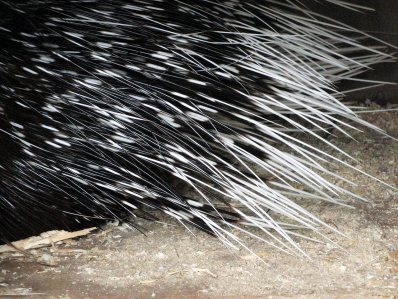Précising: porcupine
The Grammar Bit!
Read the two paragraphs opposite. Notice how the second paragraph is a shortened version of the first paragraph. This is called a précis.
In this shortened version (bold), notice how the précis keeps the main points and order of the longer text, but reduces it to approximately one third of its original length. The word précis comes from the French, meaning precise.
Précising is different to note-making – a skill that you will be very familiar with now that you are in Year 6. Discuss with your talk partner what you think the main differences are and when précising might be used instead of note-making.
With a partner, discuss how the précis opposite demonstrates the following aspects of précis writing:
- It is much shorter – ideally about 1/3 the length of the original text.
- It removes all unnecessary information and words.
- It communicates the main ideas of the original text.
- It shows the author has a good understanding of the original text.
- It is written in complete sentences, which are grammatically accurate.
Scintillating Sentences
Original Text
When a porcupine first starts to feel threatened by a predator, it will raise its quills. If this doesn’t have the desired effect, it will let the predator know not to come any closer by clattering its teeth together. If the predator continues its advance, the next step is to emit a foul odour. The pungent scent is produced from the skin above the porcupine’s tail. If all of these strategies fail, the porcupine will have no other choice than to attack. It does so by reversing backwards or sideways into the predator. Its quills may become impaled in the attacker, which can lead to serious injury or death. (109 words)
Précised Version
If quill raising and teeth chattering fail to scare off a predator, a porcupine will emit a foul odour. If this doesn’t work, it will spike the predator with its quills by reversing into it. (35 words)

Did you know?
Porcupine quills have an antibiotic coating, so an attack will not necessarily lead to infection. This is an unusual feature considering their quills are their only defence mechanism, but it is thought to be to prevent infection from accidental self-quilling.

 Sign in
Sign in

